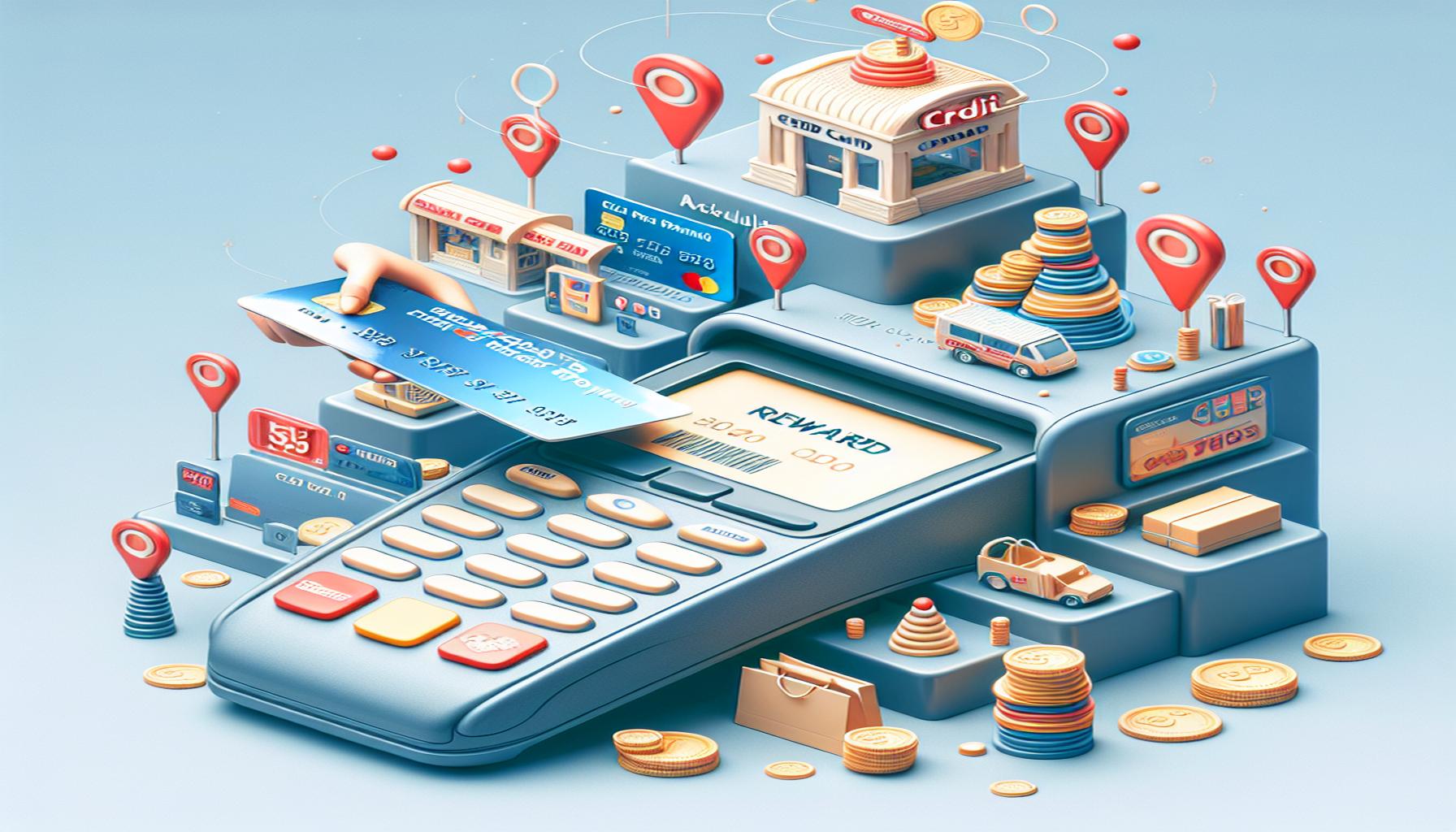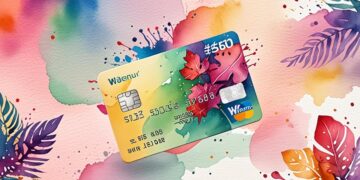How Credit Card Reward Programs Work

Exploring the Benefits of Credit Card Reward Programs
Credit card reward programs are an attractive feature that many Australian financial institutions offer to encourage responsible spending. These programs not only provide a way for cardholders to earn benefits but also transform everyday purchases into opportunities for savings and travel experiences. Understanding how these programs work can turn you into a savvy spender.
How Credit Card Reward Programs Operate
At their core, these programs reward users based on their spending habits. You can think of them as loyalty schemes that aim to enhance your purchasing power. Here are some of the fundamental components of these programs:
- Points, Miles, and Cash Back: Depending on your credit card, you may earn points that can be redeemed for a range of products or services. For example, cards may offer frequent flyer miles that can contribute towards airplane tickets, or cash back on everyday expenses such as groceries and gas. For instance, if your card offers 2% cash back on supermarket purchases and you spend $500 a month, you would earn $120 cash back annually.
- Bonus Offers: When you first sign up for a credit card, you may encounter attractive introductory offers that provide a significant number of points or cash back if you meet certain spending requirements within the initial months. For example, a card might offer 20,000 bonus points if you spend $3,000 in the first three months. This can jumpstart your rewards accumulation.
- Reward Categories: Some cards often feature tiered rewards based on spending categories. For example, a card might give 3 points per dollar spent on dining and groceries but only 1 point on other purchases. This encourages users to utilize their card for specific spending avenues where they can gain maximum rewards.
The Appeal of Credit Card Rewards
The true allure of credit card reward programs lies in the potential for significant savings and the ability to enjoy travel experiences without breaking the bank. By strategically choosing your purchases and utilizing rewards, it’s possible to enjoy benefits like free airline tickets, hotel stays, or substantial cash back that can cushion your monthly budget.
While navigating these benefits may initially seem daunting, it’s essential to remember that starting with a clear understanding of how to maximize rewards can lead to a more enjoyable financial journey. Being proactive about managing your spending and knowing which rewards are relevant to your lifestyle can truly enhance your financial planning.
Ultimately, credit card reward programs can be a powerful financial tool when used wisely. Make sure to compare different offerings and choose one that aligns with your spending habits, ensuring maximum benefits from your purchases. As you familiarize yourself with these programs, you’ll likely discover that they can provide you with more than just rewards; they can also enhance your overall financial well-being.
Understanding the Mechanics of Credit Card Reward Programs
To truly benefit from credit card reward programs, it’s essential to understand the mechanics behind how they function. While the allure of accumulating points or cash back is enticing, the effectiveness of these programs greatly relies on how well cardholders can navigate their terms and conditions. Let’s delve into a few key concepts that define the operation of these programs.
The Fundamentals of Earning Rewards
At the heart of every credit card reward program is the way in which rewards are earned. Here are the main aspects:
- Spending Thresholds: Most credit card reward programs operate on the principle that the more you spend, the more rewards you earn. However, this may come with specific thresholds. For instance, to earn bonus points, you may need to spend a minimum amount each month or within a specified period. It’s vital to assess whether you can comfortably meet these thresholds without overspending.
- Redemption Options: Understanding how you can redeem your accrued rewards is just as important as earning them. Common redemption options include travel bookings, merchandise, gift cards, or even statement credits. Always check what your points are worth in different categories as some options may offer better value than others. For example, you may find that redeeming points for flights can yield greater savings than using them for shopping vouchers.
- Expiration and Maintenance: Many reward points come with expiration dates, and some accounts may charge inactivity fees. To avoid losing out on earned rewards, it’s essential to stay aware of the terms associated with your rewards program. Regularly using your card, even for small purchases, can help maintain your rewards balance.
How to Maximize Your Rewards
Maximizing your rewards involves strategic thinking and a careful approach to spending. Here are some practical tips to help increase your earnings:
- Choose the Right Card: Not all credit cards offer the same rewards structure. Selecting a card that aligns with your lifestyle, such as one that provides greater rewards for dining out or travel, can significantly amplify your points.
- Stay Informed about Promotions: Credit card companies often run promotions that allow you to earn bonus points during certain periods or on specific categories. Keeping an eye on these promotions can boost your rewards quickly.
- Pay Your Balance in Full: To truly benefit from rewards, it’s crucial to avoid carrying a balance. Interest rates on credit cards can be steep, and any rewards earned may be quickly offset by high-interest charges. Prioritizing on-time payments can help maintain your financial health.
By familiarizing yourself with these fundamentals and adopting a strategic approach to spending, you can turn regular transactions into valuable rewards. Understanding how credit card reward programs work empowers you to make the most of your financial opportunities and enhances your overall experience as a cardholder.
Decoding the Different Types of Credit Card Reward Programs
Beyond just understanding how rewards are earned, it is equally important to recognize the various types of credit card reward programs available. Each program is designed to cater to different spending habits and preferences, allowing cardholders to choose the one that best aligns with their lifestyle.
Types of Reward Programs
Credit card reward programs can generally be categorized into three main types:
- Points-Based Rewards: This is perhaps the most common form of reward program. Cardholders earn points for every dollar spent, which can subsequently be redeemed for travel, merchandise, or even donations to charitable organizations. For example, a card may offer one point per dollar on general purchases and double points on dining and travel expenses. Frequent travelers might find cards like these particularly appealing as they can accumulate significant points for future trips.
- Cash Back Rewards: Cash back cards return a percentage of your spending directly to you. This can range from a flat rate on all purchases to higher cash back rates on specific categories such as groceries or gas. For instance, a typical cash back card may offer 1.5% cash back on all purchases, but provide 3% back on supermarket transactions. This straightforward approach can be very attractive for those who prefer tangible rewards deposited into their bank accounts.
- Travel Rewards: Tailored for avid travelers, these cards offer rewards that are primarily designed for flight and hotel bookings. Often, they provide bonuses for signing up, with substantial point multipliers for travel-related spending. Cards under this category might partner with airlines or hotel chains, allowing members to accrue points specifically for those services. An example of this could be a card that offers two points for every dollar spent on flights, which can be redeemed for flight upgrades or free hotel stays.
Understanding Annual Fees and Interest Rates
While exploring reward programs, it is crucial to keep in mind the associated costs, such as annual fees and interest rates. Certain reward cards come with hefty annual fees that can sometimes outweigh the benefits, especially if the cardholder does not frequently use it. For example, if a rewards program costs $200 a year but only provides $100 worth of value in rewards, it may not be the best choice.
On the other hand, introductory offers can make premium cards seem attractive. It’s vital to evaluate these offers and analyze whether they fit your spending habits. Additionally, consider the interest rates that apply if you do not pay your balance in full each month. Interest charges can quickly erode the value of rewards earned, so always prioritizing paying off your balance is essential.
The Role of Credit Scores in Reward Programs
Another aspect to consider is how reward programs are tied to credit scores. Many premium reward cards necessitate a higher credit score for approval. This is important as maintaining a good credit score opens doors to better rewards programs with attractive benefits.
Additionally, credit scores can influence the APR (Annual Percentage Rate) offered on these cards. Higher credit ratings may qualify you for lower interest rates, amplifying the overall worth of the rewards you earn. Being aware of your credit status and working to improve it can help you access the most advantageous credit card rewards available.
By exploring the different types of reward programs, understanding associated costs, and recognizing the importance of credit scores, you can make informed decisions when selecting a credit card that works best for you. This insight will help you optimise the benefits of your credit card rewards and ensure that you create value from your spending habits.
Conclusion
Understanding how credit card reward programs work can empower you to make smarter financial decisions and maximise the benefits of your spending. By familiarising yourself with the different types of rewards, such as points-based, cash back, and travel rewards, you can select a card that aligns with your lifestyle and spending habits. Each program has its own advantages, and finding the right fit can lead to substantial savings and benefits over time.
Moreover, it’s crucial to be mindful of associated annual fees and interest rates, as these can significantly impact the true value of the rewards you earn. Sometimes, the allure of attractive sign-up bonuses can mask underlying costs that may prove disadvantageous in the long run. This calls for a thorough evaluation of any rewards card’s value against your personal spending patterns.
Your credit score also plays an essential role in accessing premium reward programs. A higher score opens the door to better terms, ensuring that you not only earn rewards but do so with lower interest costs. It’s beneficial to regularly check your credit score and work towards improving it for greater financial opportunities.
In conclusion, with the right knowledge and strategies, credit card reward programs can be a valuable tool for enhancing your financial wellness. By assessing your needs, understanding the programs thoroughly, and keeping costs in check, you can fully enjoy the rewards of your spending—whether that’s a dream vacation or cash back in your pocket. Always make informed choices and remember that the ultimate goal is to leverage rewards for financial gain and enjoyment.

Linda Carter is a writer and financial expert specializing in personal finance and financial planning. With extensive experience helping individuals achieve financial stability and make informed decisions, Linda shares her knowledge on the Take Care Garden platform. Her goal is to empower readers with practical advice and strategies for financial success.





